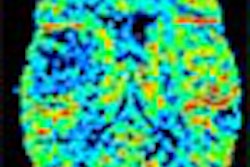Medical progress and technological advancement have made cancer a much less deadly diagnosis. Part of the medical team that helps this change occur are radiation therapists and medical dosimetrists.
Radiation therapists administer targeted doses of radiation to a patient’s body to treat cancer and other diseases. When the radiation strikes human tissue, it produces highly energized ions that gradually shrink and destroy the nucleus of malignant tumor cells. Radiation therapists are highly skilled medical specialists educated in physics, radiation safety, patient anatomy, and patient care. They typically see their patients three to five days a week throughout a four to seven week treatment plan.
Medical dosimetrists determine how much radiation will be delivered to a tumor site. Under the supervision of a medical physicist, they calculate and generate radiation dose distributions that follow the treatment plan outlined by a radiation oncologist. Medical dosimetrists use their knowledge of physics, anatomy, and radiobiology to design optimal treatments that target the tumor while sparing the healthy tissue around it.
Stephanie Eatmon, Ed.D., R.T.(R)(T), who directs the radiation therapy program at California State University, Long Beach, said she has spent her adult life in a career that she loves--a job that allows her to make a positive impact on the patients she treats. Additionally, the past 11 years at Cal State have allowed her to share the high-tech, high-touch gift of healing with students. "I love school. I really do have the best of both worlds," she said.
She explained that when she went to radiologic technology school, she found her rotation through radiation therapy captivating. "I liked x-ray, but I never saw the patients again. I did not know how he was doing. Radiation therapy gives me the time to build a relationship with the patient and with the physician. I had always wanted to be a doctor, but this was it for me," Eatmon said.
She is quick to add that radiation therapy is not for everyone. "You really have to like to work with patients and people, especially when they are facing difficult times. You have to like technology and feel comfortable with computers and big equipment," she said. "It is that high-tech, high-touch combination that runs true for all careers in radiologic technology. Because you have a lot of autonomy in therapy, you also have to have a high quotient of integrity. You cannot cut corners. You must pay attention to detail. You have to be aware that you are doing the very best for the patient at all times."
Eatmon runs a four-year baccalaureate program at Cal State. Students complete one year of general studies, then have three years of clinical and classroom studies. To help students understand if they want to make radiation therapy or medical dosimetry their profession, Cal State offers a 40-hour rotation through the program. Radiation therapy programs usually take three or four years to complete, and Eatmon believes that students should earn a bachelor’s degree in the process, although not all of the programs across the country offer a diploma.
Like other areas of radiologic technology, there is a shortage of qualified personnel in radiation therapy, making her students in high demand. They usually have a job before they graduate. Although careers in radiation therapy can be intense and demanding, they are financially rewarding. Demand for skilled therapists has increased salaries about 20% during the past four years, according to preliminary results from an ASRT wage and salary survey. Beginning radiation therapists often earn between $25 to $27 an hour.
By American Society of Radiologic TechnologistsJune 2001



















